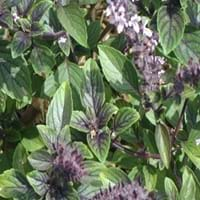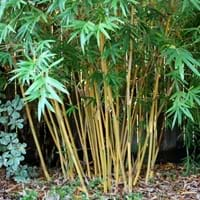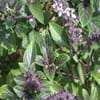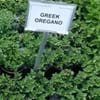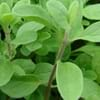Life Span
Perennial
Perennial
Origin
Hybrid origin
China
Types
Not available
Not Available
Habitat
gardens, Grassland, Hillside, meadows
Dry Forest, hedge rows, open Woodlands, Shady Edge
USDA Hardiness Zone
9-11
8-15
AHS Heat Zone
12-1
12 - 1
Sunset Zone
A1, A2, A3, H1, H2, 1a, 1b, 2a, 2b, 3a, 3b, 4, 5, 6, 7, 8, 9, 10, 11, 12, 13, 14, 15, 16, 17, 18, 19, 20, 21, 22, 23, 24
Not Available
Habit
Oval or Rounded
Clump-Forming
Minimum Width
Not Available
Flower Color
Pink, Lavender
Not Available
Flower Color Modifier
Bicolor
Bicolor
Fruit Color
Not Available
Not Available
Leaf Color in Spring
Purple
Light Green, Dark Green
Leaf Color in Summer
Green, Purple
Light Green
Leaf Color in Fall
Green, Purple
Light Green, Dark Green
Leaf Color in Winter
Light Green
Light Green, Dark Green
Leaf Shape
Ovate
digitate
Plant Season
Spring, Summer, Fall, Winter
Spring, Summer, Fall, Winter
Sunlight
Full Sun, Partial Sun
Full Sun, Partial Sun, Partial shade
Type of Soil
Loam, Sand
Loam, Sand
The pH of Soil
Neutral
Acidic, Neutral, Alkaline
Soil Drainage
Well drained
Average
Bloom Time
Indeterminate
Not Available
Tolerances
Drought
Drought
Where to Plant?
Ground
Container, Ground
How to Plant?
Stem Planting
Budding, From Rhizomes, Seedlings
Plant Maintenance
Medium
Medium
Watering Requirements
Requires regular watering
Average Water Needs
In Summer
Lots of watering
Lots of watering
In Spring
Moderate
Moderate
In Winter
Average Water
Average Water
Soil pH
Neutral
Acidic, Neutral, Alkaline
Soil Type
Loam, Sand
Loam, Sand
Soil Drainage Capacity
Well drained
Average
Sun Exposure
Full Sun, Partial Sun
Full Sun, Partial Sun, Partial shade
Pruning
Cut or pinch the stems, Do not prune during shooting season, Prune regularly, Prune to stimulate growth, Remove dead leaves, Remove dead or diseased plant parts, Remove deadheads
No need to prune
Fertilizers
All-Purpose Liquid Fertilizer
All-Purpose Liquid Fertilizer
Pests and Diseases
Red blotch
Red blotch
Plant Tolerance
Drought
Cold climate, Drought, Heat Tolerance, Wet Site
Flower Petal Number
Single
Single
Fragrant Bark/Stem
Yes
No
Foliage Texture
Coarse
Medium
Foliage Sheen
Glossy
Matte
Attracts
Bees
Butterflies
Allergy
no allergic reactions
Not Available
Aesthetic Uses
Not Used For Aesthetic Purpose
Showy Purposes
Beauty Benefits
Not Available
No Beauty Benefits
Environmental Uses
Air purification
Air purification, Food for insects, Wildlife
Medicinal Uses
constipation, Diarrhea, Headache, Kidney problems, Stomach pain
Not Available
Part of Plant Used
Whole plant
Stem, Tree trunks
Other Uses
Used As Food, Used as Ornamental plant, Used for fragrance
Economic Purpose, Traditional medicine, Used As Food, Used for woodware, Used in Furniture, Used in paper industry
Used As Indoor Plant
No
No
Used As Outdoor Plant
Yes
Yes
Garden Design
Container, Edible, Herb / Vegetable, Mixed Border
Container, Feature Plant, Hedges, Screening / Wind Break, Tropical
Botanical Name
OCIMUM 'African Blue'
BAMBUSA multiplex
Common Name
African Blue Basil, Hybrid Basil
Clumping Bamboo, Hedge Bamboo
In Hindi
अफ्रीकी ब्लू तुलसी
हेगड़े बांस
In German
African Blue Basilikum
Hedge Bambus
In French
Bleu basilic africaine
Bamboo Hedge
In Spanish
Albahaca azul africana
bambú de cobertura
In Greek
Αφρικής Μπλε βασιλικό
hedge Μπαμπού
In Portuguese
Africano manjericão azul
Bamboo Hedge
In Polish
Afrykański Niebieski bazylią
Żywopłoty Bamboo
In Latin
अफ्रीकी ब्लू तुलसी
Sepi Bamboo
Phylum
Not Available
Magnoliophyta
Class
Magnoliopsida
Liliopsida
Clade
Basal Tricolpates
Angiosperms, Commelinids, Monocots
Tribe
Not Available
Bambuseae
Subfamily
Not Available
Bambusoideae
Number of Species
Not Available
Not Available
Season and Care of African Blue Basil and Hedge Bamboo
Season and care of African Blue Basil and Hedge Bamboo is important to know. While considering everything about African Blue Basil and Hedge Bamboo Care, growing season is an essential factor. African Blue Basil season is Spring, Summer, Fall and Winter and Hedge Bamboo season is Spring, Summer, Fall and Winter. The type of soil for African Blue Basil is Loam, Sand and for Hedge Bamboo is Loam, Sand while the PH of soil for African Blue Basil is Neutral and for Hedge Bamboo is Acidic, Neutral, Alkaline.
African Blue Basil and Hedge Bamboo Physical Information
African Blue Basil and Hedge Bamboo physical information is very important for comparison. African Blue Basil height is 45.70 cm and width 30.50 cm whereas Hedge Bamboo height is 460.00 cm and width Not Available. The color specification of African Blue Basil and Hedge Bamboo are as follows:
African Blue Basil flower color: Pink and Lavender
African Blue Basil leaf color: Purple
Hedge Bamboo flower color: Not Available
- Hedge Bamboo leaf color: Light Green and Dark Green
Care of African Blue Basil and Hedge Bamboo
Care of African Blue Basil and Hedge Bamboo include pruning, fertilizers, watering etc. African Blue Basil pruning is done Cut or pinch the stems, Do not prune during shooting season, Prune regularly, Prune to stimulate growth, Remove dead leaves, Remove dead or diseased plant parts and Remove deadheads and Hedge Bamboo pruning is done No need to prune. In summer African Blue Basil needs Lots of watering and in winter, it needs Average Water. Whereas, in summer Hedge Bamboo needs Lots of watering and in winter, it needs Average Water.
